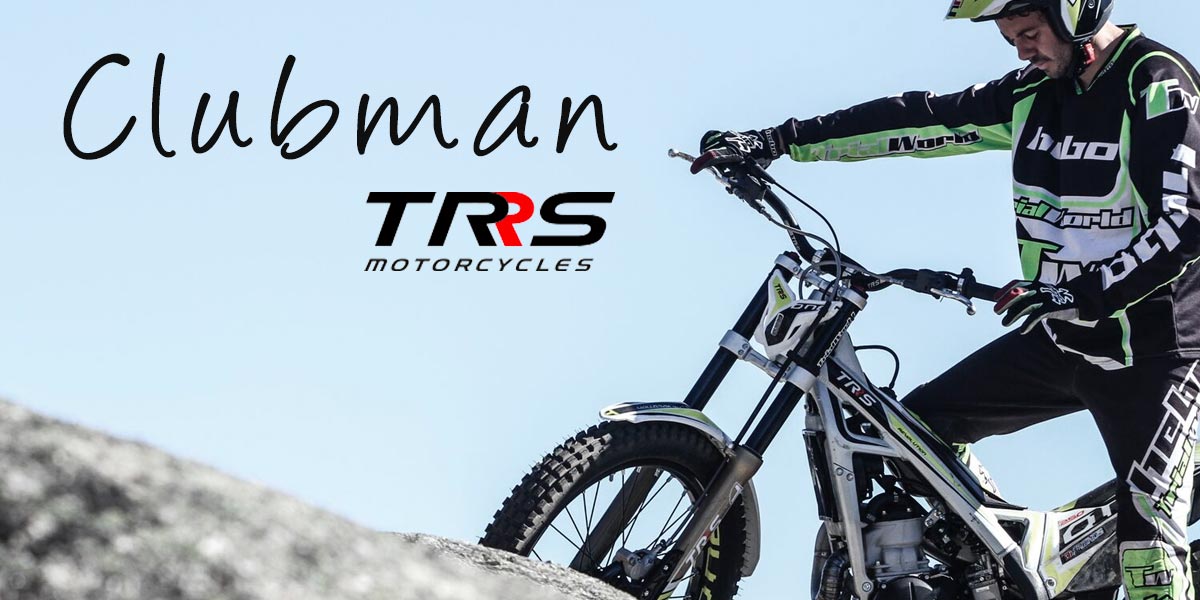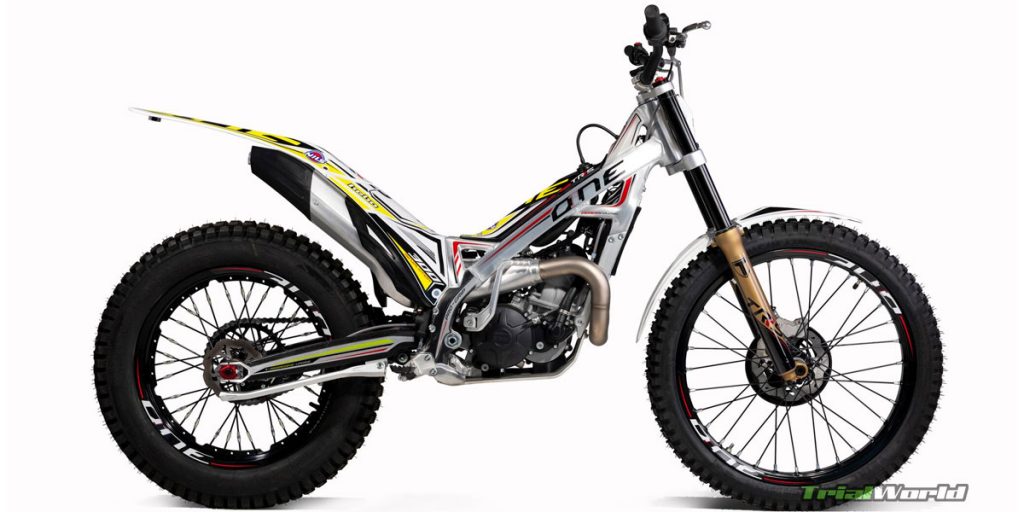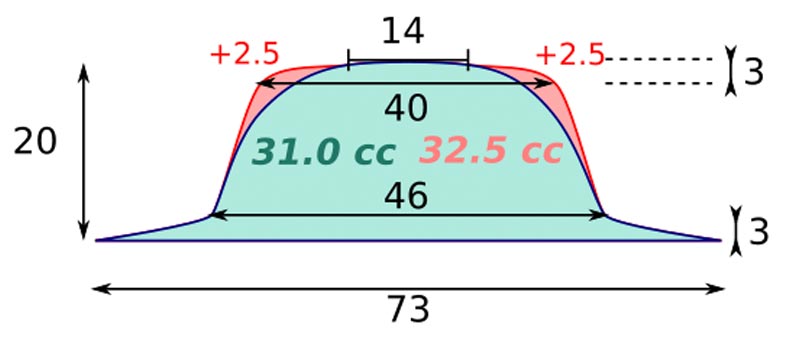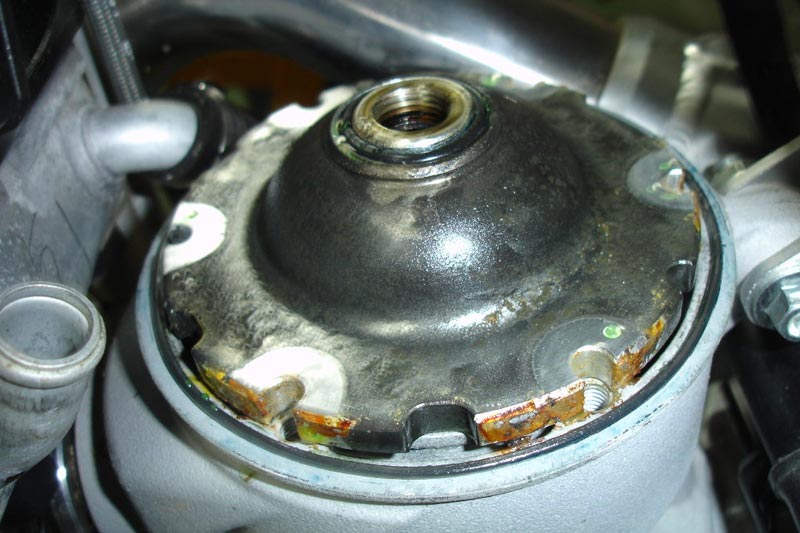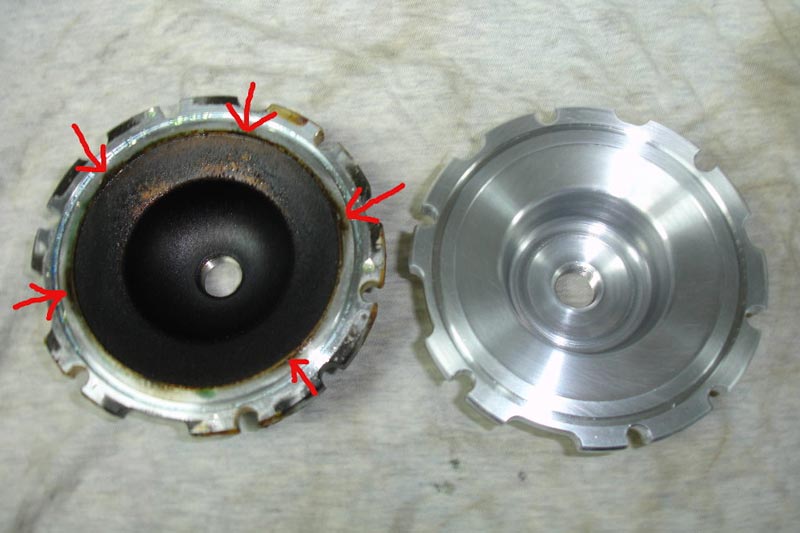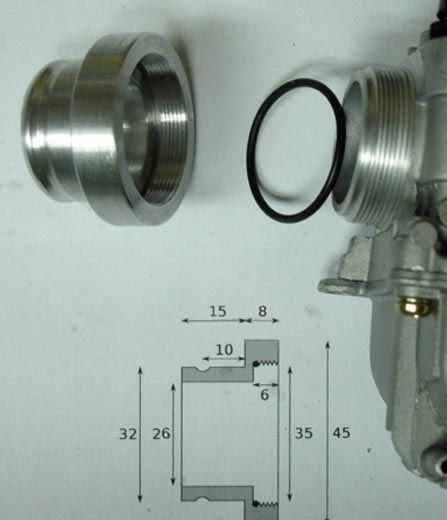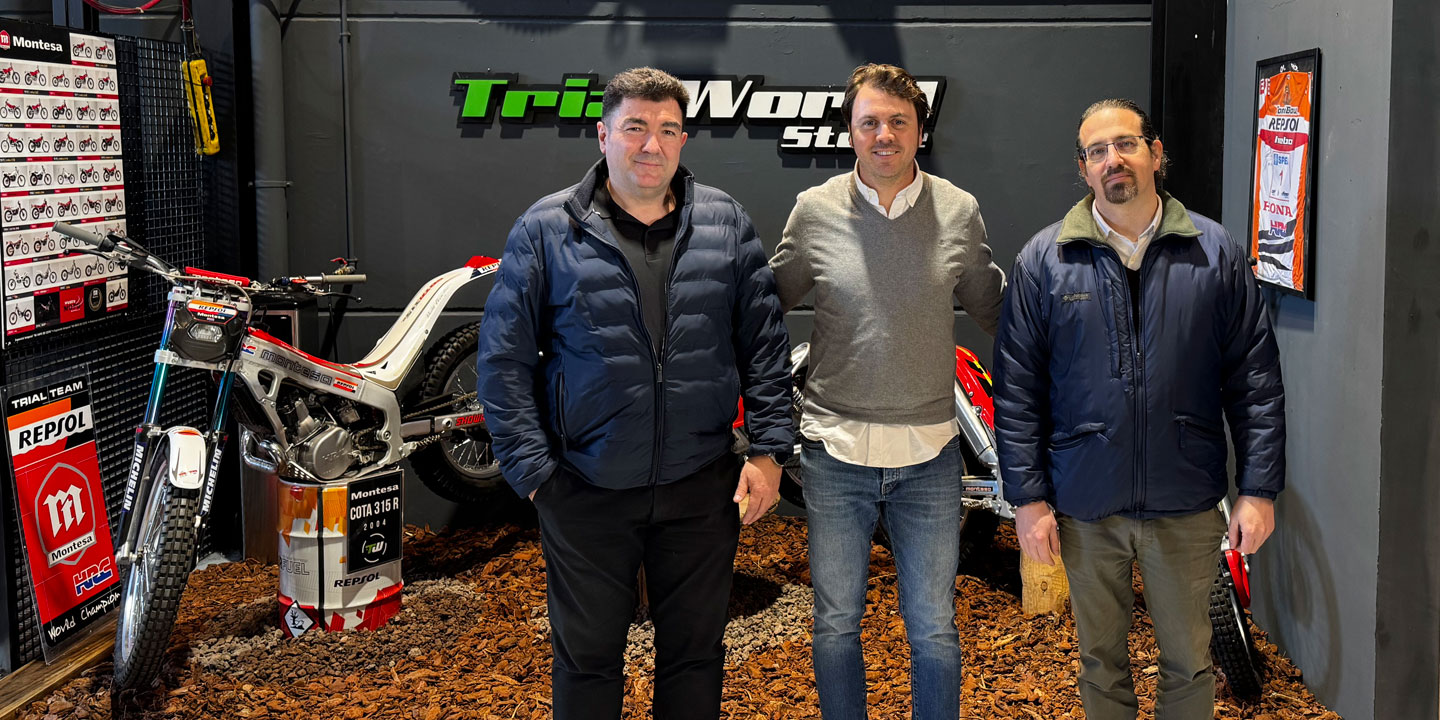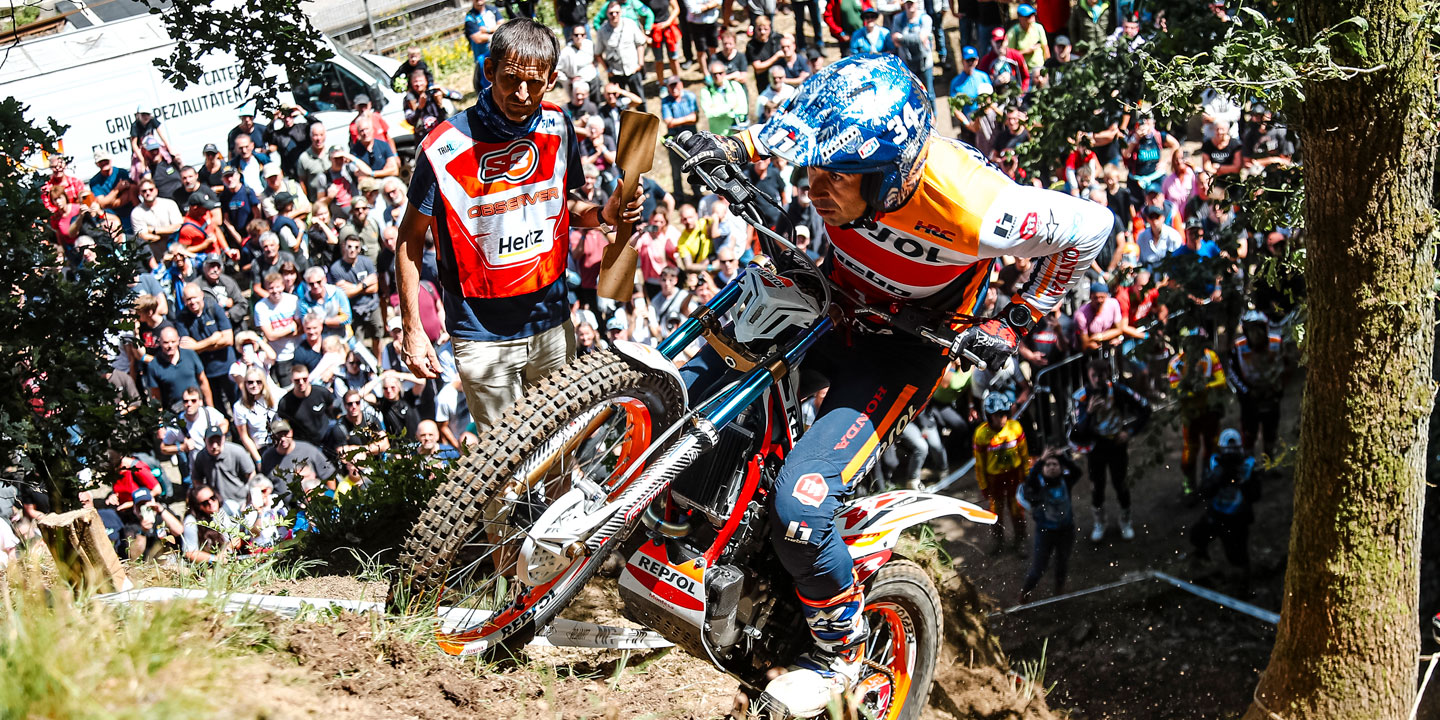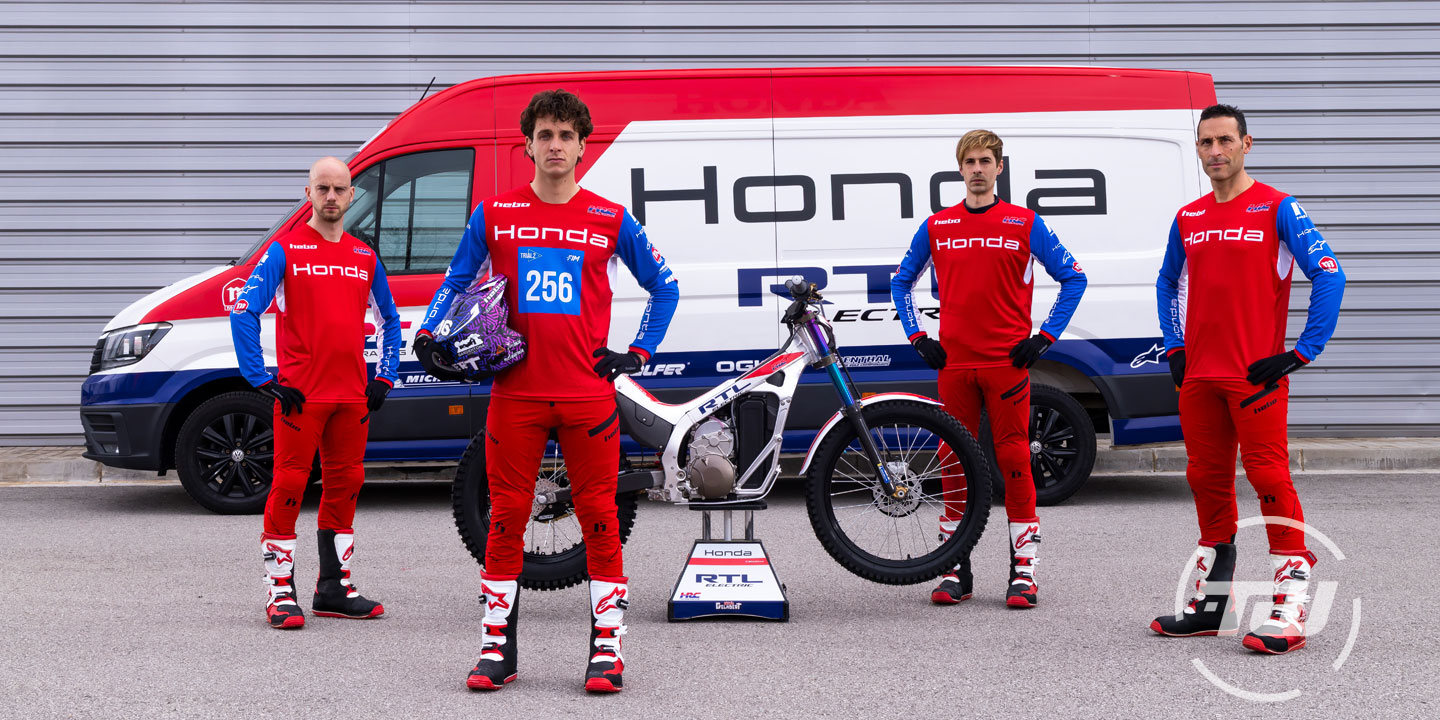Achieving more smoothness and efficiency in riding at the expense of a less demanding trial bike, but with the virtues of a modern engine. Our dear friend Marlintec shares with us a preparation he has done on his TRRS One 250, working on aspects such as the cylinder head, shock absorber, clutch and carburetor. A brilliant work that reopens the debate on how important it is to get the displacement right at the time of purchase.
CLUBMAN?
This is what the English call the average fan, the one who fills the races every weekend with the sole intention of having a good time. There, as here, they have a long tradition of trials but, unlike here, the best-selling bike is of medium displacement, with a smooth and controllable response, perhaps due to its climate… or because they have understood that, sometimes, less is more. As a significant curiosity, Beta sells more 250 than 300 there, when our bullskin does not bring the 250 even by express request. The English also enjoy the unreleased Evo 200, an inconceivable little engine for the Spanish fury, where we have always been more of a big donkey, no matter how much it walks and commands us.
What is the aim of this preparation? Quite simply, increase diversity underneath. There are riders who demand a less demanding trial but without giving up a modern engine. How many times have we seen that an unruly motorcycle punishes the owner with a 5 in an area that hardly requires an engine?
Most of the intermediate areas can be done perfectly with a 250 and, even so, there is still plenty of engine to wear it as a hat that you neglect. Once we recognized our mistake, we tried to calm the donkey with additional flywheels, thicker cylinder seals, smaller carburetors, slow-firing gas grips, etc. that accomplished their mission, although sometimes in an unbalanced way.
Here we present a simple preparation based on small steps, keeping the best of the bike and without adding unnecessary burdens. And, best of all, easily reversible, in case we find the fountain of youth on one of our excursions.
THE BASE
We chose a
TRS ONE
because it is modern yet simple and has a very good industrial quality, as well as being the lightest production bike. We could have started with a gasgas or a sherco because they have the same qualities of simplicity and ease of preparation, although we would have had problems fitting the new shock absorber.
It would have been more difficult with a beta because it had an old clutch and, practically impossible, with a Montesa or a Vertigo because of its almost untouchable injection system. Be careful, this does not mean that some are better than others, only that some lend themselves better than others to be adapted to this experiment. The TRS ONE is very well prepared because it is an extremely normal bike, something rare in recent years. She has no gimmicks and is sincere when you show her the tools.
STAGE 1: CYLINDER Head
Since we’re starting with anglicisms… At this stage we will achieve the greatest advance in the sweetening of the engine: a modification of the cylinder head to reduce compression. The TRS comes with a detachable stock that can be easily interchanged. The standard combustion chamber has a volume of 31 cc (only in the cylinder head, not counting the volume left by the piston between its crown and the cylinder roof) and the shape of its vault is practically hemispherical, theoretically the one that offers the best thermodynamic performance.
However, we are not looking for the highest performance here, but the best performance for our intentions, so we have been inspired by other trial cylinder heads to design the new vault.
Specifically, the cylinder head of the 2006 gasgas 250 (with a volume of 32 cc and a flatter roof) and the cylinder head that Martín Clerch designed more than ten years ago with a conical shape, an even greater volume and a wider squish band (measures that we do not reveal here to protect its intellectual property).
Modification is easily done on a lathe. You just have to be careful to center the stock well and use good blades to get the thinnest possible surface without leaving dead corners, come on, something that every trained turner knows. As shown in the diagram, the material is removed in such a way as to achieve a flatter roof and a transition to the straighter squish skirt. With that shape, we leave the volume at 32.5 cc. Figure 2 shows the stock stock (on the left, dirty) and the modified stock (on the right, fresh from the lathe).
By the way, in the dirty cylinder head there are several leaks of combustion gases (between the holes for the screws); This is because the cylinder head cover had a poorly finished edge and stopped over the cylinder before the cylinder head was fully tightened. A review on a sheet of fine sandpaper on a flat marble easily solved the problem (if you have a TRS and notice that it spits water out of the radiator or bursts the seal of the pump, this is almost certainly the case.
By the way, we have checked that the old GasGas cylinder head fits perfectly in the TRS cylinder (except for the vertical cooling outlet) and a dear friend has informed us that the cylinder heads that S3 manufactures for gasgas also fit in the TRS lid, so it will not be uncommon to see decompressed cylinder heads among the customization kits offered at the factory soon.
The higher the height at which we trial, the less material will have to be removed. In fact, from 1500 – 1700 meters, it is better not to touch it, as the less dense air at those heights already directly has the desired effect with this modification.
STAGE 2: CARBURETOR
There is a trial legend that maintains a smoother response of the same engine with a dell’orto compared to the more abrupt behavior with a keihin. It is so widespread that it is common to see how the Japanese that comes standard in some models is replaced by the Italian, in search of less forcefulness, especially in the 300.
Truly, there is some truth to the legend, but it is above all a misinterpretation of the matter: the keihin, in fact, gives a much cleaner and smoother response, although it is capable of unleashing the full potential of the engine; The Dell’Orto has a more mediocre performance and, although it works well, it is not able to tune the carburetion as much and therefore makes the engine breathe worse. In addition, the diameter factor is added: the 28 mm of the Japanese is devastating compared to the 26 of the Italian. The ONE of our preparation comes with a dell’orto as standard, but we couldn’t give up the finesse in the touch that keihin gives.
Therefore, we proceeded to jacket the diffuser of a keihin.
The work would be done with a simple 26 inside x 28.5 outer bushing, with a groove to be driven into the carburetor nozzle and two holes (one on the side for the choke outlet and one at the base for the bottom duct outlet). However, as the keihin is almost 10 mm shorter than the dell’orto, in order to prevent the tank from rubbing against the crankcase and, incidentally, to lengthen the length of the nozzle itself in search of greater smoothness, a threaded hairpiece was turned to look for those 10 mm and, incidentally, to press the 26 bushing inside the carburetor.
As for the carburetion, as our TRS usually moves at sea level, we left the 125 high and the JJH needle with the clip in the center position, but we mounted a low 42 with the air screw open between 3/4 and 1.5 turns (depending on the weather). With these settings, a standard 250 would sting a bit on low and in the transition to mids, but the unzipped stock prevents this effect. By putting less fuel in the lows, the response is greatly smoothed and rpm is gained with feel even below the idle threshold.
This configuration allows you to piston, streams at a snail’s pace, without dirtying the spark plug and always having a lightning acceleration at any step. There is no problem with greasing, because when the oil is most needed, there is the 125 high. The lower compression of the cylinder head also prevents overheating that such a poor carburetion would give on a standard bike.
If we had kept the dell’orto, we would certainly have lowered the low gum from 35 (series) to 33 at least but, as we say, the feel of this jacketed keihin is undeniable once you try it.
STAGE 3: CLUTCH
The standard clutch of the TRS ONE is already exemplary: not excessively hard and quite progressive. However, once the response of the engine is smoothed, there is also a lot of smoothness to be gained in this key element of the current trial. As standard, our TRS’s clutch is calibrated to transmit the power of a 300 without skidding, so we have some scope to play with spring force.
The diaphragm springs act in very few mm, so the initial tension with which they tighten the discs is crucial.
Basically, there are two parameters to play with: the thickness of the sheet and the initial tension itself. As it is a very common element in mechanics, you can find infinite variants of these “belleville” springs and they are very cheap, so we can entertain ourselves a lot until we find our ideal combination (for example, this year’s shercos come with a thinner sheet and more initial prestressing).
In principle, we tried an adjustable spring gland (you can see it
here
) that is really well thought out: it has three times as many holes as the standard spring gland so that it can be placed in 3 positions: H, M and S.
The M position leaves the spring at the standard tension, while the H position compresses it 0.2 mm more and the S, the one we tested, loosens it 0.1 mm compared to the series. The assembly is very simple: you just have to remove the five screws from the clutch cover, take it out carefully so as not to lose the washer that rests on the hangers and the radial bearing; You can attach it with a zip tie to the exhaust, so that it does not get in the way. As the 10 screws that hold the spring gland are 4 mm, they can be loosened without the hub turning if you put 5° in and lock the wheel.
The standard spring gland as well as the adjustable one suffer from the same defect: the edge that should guide the spring is almost 1 mm less than the internal diameter of the spring, which can cause a certain off-center when mounting it, which in turn will result in a pulsating clutch, especially in the first contact, the typical one that makes you skid when leaving a static position. Therefore, when mounting the new spring gland, you have to place all the screws loosely and you will notice that lateral clearance in the diaphragm.
Make sure that this clearance is the same over the entire circumference (with a gauge, for example) and then progressively tighten, quarter by quarter turn, the cross screws (for example, jumping two between each tightening). They are good screws, but small, don’t tighten them to more than 4 Nm.
Only with this modification, the clutch feels softer although, on the other hand, a little precision is lost in the first part of the stroke (which is expected caused by the lower tension). However, this precision and progressiveness is gained in another place: a slightly more viscous oil, which can be graduated to the extreme by mixing different grades (making sure before that gums do not form).
After many tests, 250 cc of Repsol Trial 75W + 100 cc of Castrol MTX 10W30, in the warm temperatures typical of our area, give a very pleasant combination in terms of smoothness when clutching, without affecting the precision/hardness of the gear shift.
It is probably enough to use any 75W specific for clutch, but it is worth trying in search of greater progressivity once the diaphragm is loosened (depending on the exact thickness of the discs, our bike still admits +0.1 less tension, which we will achieve soon with a spring gland designed for this purpose, with a smaller internal diameter to better center the diaphragm).
The end result, for sure, will not be to the liking of Raga or anyone who resembles him in the way he rides because it is the most forgiving and softest clutch we have tested on an adult motorcycle.
STAGE 4: SHOCK ABSORBER
The ollé that comes with our ONE fulfills its mission as a “jack-of-all-trades” but is clearly insufficient for our goal: traction and comfort above all. Although it is adjustable, the response is not very sensitive to changes in damping speed. If the hydraulics are left looser, it bounces on small steps in a row; If we slow it down more, you feel every little stone that steps on the wheel.
The logical step would be to change it for the reiger that comes with the RR, which has independent regulation in compression and rebound. Too easy, let’s curl the curl by putting on a showa! We had an almost new showa coming from a 4RT, so it would be a waste not to try to fit it.
Fortunately, the swingarm recess on the TRS is large enough to accommodate the showa’s massive lung, and the larger-diameter spring fits right between the filter box and the exhaust. The length of the showa is a few mm shorter than that of the olé, but that’s a minor issue compared to the lower joint: the TRS triangle needs a fork terminal (ollé) and the showa ends in the typical concentric bushing. No problem; a new fork-finished triangle is machined, similar to that of the TRS gold (you can see it
here
).
The showa, with its huge piston and its cartridge of countless blades, is a very comfortable shock absorber, consistent over time and very durable. It weighs half a kilo more than the olé, but it is very close to the center of gravity, so this extra weight can be dynamically forgiven.
CONCLUSION
Is it worth it? If you’re an advanced rider and you change your bike every year, it’s clear that you don’t. This preparation will surely be considered by a mid-level trial rider although with an exquisite touch (that is, a “clubman”), who keeps riding for several years and prioritizes control and smoothness over absolute performance.
As the base is excellent, a bike prepared like this, which allows a lot of adaptation to the tastes of the owner, can end up being the typical “forever motorcycle”, which you grow fond of and never sell.
